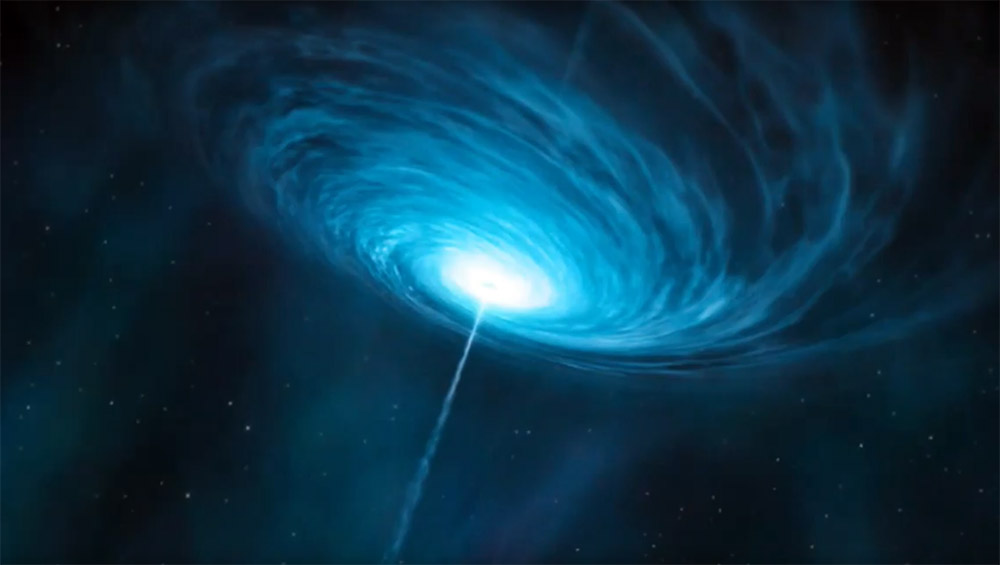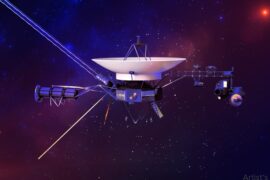There are billions and billions of objects out there in the universe. So many that it can be hard to classify them and distinguish them from each other. It can also be hard to remember the definition when some of the names sound so similar.
Such is the case of Blazars and Pulsars. These two types of objects share some similarities but they are also two completely different things.
In this article, we’ll analyze each of them and compare them to figure out all the ways they are similar and different from each other so you can learn to tell them apart.
Let’s start by defining what they are.
What is a Blazar?

From our point of view on Earth, Blazars are the brightest objects that we can see. They are a type of quasars whose jets of light happen to be directly pointed in the direction of Earth. This is why we perceive them to be so luminous.
If that wasn’t clear enough, let’s take a step back and define what a quasar is.
A quasar is a galactic nucleus made by a supermassive black hole. These galactic nuclei have discs of light around them caused by the friction and the gravitational forces that are being applied to the dust and gas that has “fallen” into it. When this disc is extremely luminous, it starts to emit immense amounts of electromagnetic radiation in all directions and ejects a jet or a beam of light out of the poles of the nuclei. That is a quasar.
A blazar is simply a type of quasar where this jet is pointed to Earth.
If you want a more detailed explanation, check out our article on how are quasars formed?
What is a Pulsar?

A pulsar is a type of neutron star (a massive star that collapsed). Pulsars rotate quickly and are highly magnetized. This causes them the shoot electromagnetic radiation out of their poles.
Because their signal can only be detected when this beam is directly pointed towards Earth, it is as if these stars had a pulse. Sending a signal a few times per second. Their name comes from this effect.
The fastest pulsar that we know about spins at a rate of 716 times per second. Pulsars eventually start to slow down and the electromagnetic pulse turns off. Scientists believe that about 99% of these neutron stars in the universe have already stopped pulsating.
Now that we know a little more about blazars and pulsars we can begin to determine their differences and similarities.
Blazar and pulsar differences
- Blazars are located at the center of a galaxy. Pulsars can exist anywhere.
- Pulsars are stars, Blazars are supermassive black holes.
- Pulsars spin multiple times per second. Blazars much slower.
- Blazars have active accretion disks. Pulsars don’t.
- Blazars have only been observed very far away from Earth.
- The jet in blazars is constantly pointing towards Earth. The one in pulsars only does it sometimes as it spins.
- Blazars are much bigger and can have thousands or even millions of times more mass than pulsars.
- Pulsars are much more common than blazars.
Blazar and pulsar similarities
- They are both the brightest type of their category of objects (quasars and neutron stars).
- They both emit electromagnetic radiation in the shape of a beam or jet out of their poles.
- Pulsars and blazars originate out of collapsed stars.
- Some scientists believe blazars and pulsars were much more common in the early days of the universe and now most of them have “turned off”.
- They both emit radiation all across the electromagnetic spectrum.
- The origin of both names comes from the abbreviation for “radio source”.
- They were both first discovered thanks to radio frequencies.
Summary
- Blazars are galactic nucleus (supermassive black holes) with extremely active and luminous accretion discs.
- Pulsars are a type of neutron star that spin rapidly.
- Even though blazars and pulsars are completely different types of objects, they share some similarities. The most notable is they both emit jets of light perpendicularly out of their poles.
Enjoyed this article?
Get daily 10-minute PDFs about astronomy to read before bed!
Sign up for our upcoming micro-learning service where you will learn something new about space and beyond every day while winding down.







